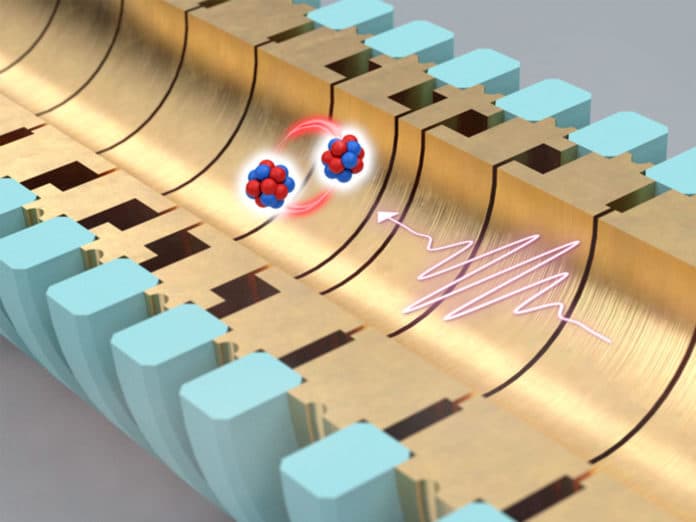Electrons are some of the most basic building components of matter that we are familiar with. They have several distinguishing characteristics, including a negative charge and the existence of an exact intrinsic angular momentum, often known as spin. Each electron, as a charged particle with spin, has a magnetic moment that aligns in a magnetic field as a compass needle does.
Quantum electrodynamics can forecast the strength of this magnetic moment, which is given by the so-called g-factor, with incredible accuracy. This computation agrees to within 12 digits with the empirically determined g-factor, making it one of the most precise theory-experiment matches in physics to date. The magnetic moment of the electron, on the other hand, changes when it is no longer a “free” particle, that is, when it is linked to an atomic nucleus, for example. QED, which defines the interaction between electrons and nucleus in photon exchange, can be used to determine minor changes in the g-factor. This notion can be sensitively tested thanks to high-precision measurements.
In a new study, scientists at the Max Planck Institute for Nuclear Physics (MPIK) in Heidelberg successfully investigated QED predictions with unprecedented resolution. They used a newly developed technique to measure a very small difference in the magnetic properties of two isotopes of highly charged neon in an ion trap with previously inaccessible accuracy.
Group leader Sven Sturm said, “To do this, we looked at the difference in the g-factor for two isotopes of highly charged neon ions that possess only a single electron. These are similar to hydrogen but with 10 times higher nuclear charge, enhancing the QED effects. Isotopes differ only in the number of neutrons in the nucleus when the nuclear charge is the same. 20Ne9+ and 22Ne9+ with 10 and 12 neutrons, respectively, were investigated.”
A specifically built Penning trap is used in the ALPHATRAP experiment at the Max Planck Institute for Nuclear Physics in Heidelberg to store single ions in a strong magnetic field of 4 Tesla in a nearly perfect vacuum. The experiment’s goal is to figure out how much energy it takes to flip the “compass needle’s” (spin) orientation in a magnetic field. This is accomplished by determining the exact frequency of microwave excitation required for this purpose. However, the frequency is also affected by the magnetic field’s exact value. To figure this out, scientists use the velocity of ions in the Penning trap, which is likewise affected by the magnetic field.
Despite the superconducting magnet’s excellent temporal stability, unavoidable small variations in the magnetic field limit prior observations to roughly 11 digits of precision.
Fabian Heiße, Postdoc at the ALPHATRAP experiment, said, “The idea of the new method is to store the two ions to be compared, 20Ne9+ and 22Ne9+ simultaneously in the same magnetic field in coupled motion. In such a motion, the two ions always rotate opposite each other on a common circular path with a radius of only 200 micrometers.”
As a result, magnetic field changes have nearly comparable effects on both isotopes, implying that the difference in energies sought has no influence. The scientists were able to determine the difference in the g-factors of both isotopes with a record accuracy of 13 digits when combined with the measured magnetic field, an improvement of 100 over prior measurements, and hence the most exact comparison of two g-factors in the world.
Group leader Zoltán Harman said, “The theoretical calculations were performed with similar accuracy in Christoph Keitel’s department at MPIK. In comparison with the new experimental values, we confirmed that the electron does indeed interact with the atomic nucleus via the exchange of photons, as predicted by QED.”
“This has been resolved and successfully tested for the first time by the different measurements on the two neon isotopes. Alternatively, assuming the QED results are known, the study allows the nuclear radii of the isotopes to be determined more precisely than previously possible by a factor of 10.”
Postdoc Vincent Debierre said, “Conversely, the agreement between the results of theory and experiment allows us to constrain new physics beyond the known standard model, such as the strength of the interaction of the ion with dark matter.”
First author Dr. Tim Sailer said, “In the future, the method presented here could allow for several novels and exciting experiments, such as the direct comparison of matter and antimatter or the ultra-precise determination of fundamental constants.”
Journal Reference:
- Tim Sailer et al, Measurement of the bound-electron g-factor difference in coupled ions, Nature (2022). DOI: 10.1038/s41586-022-04807-w
